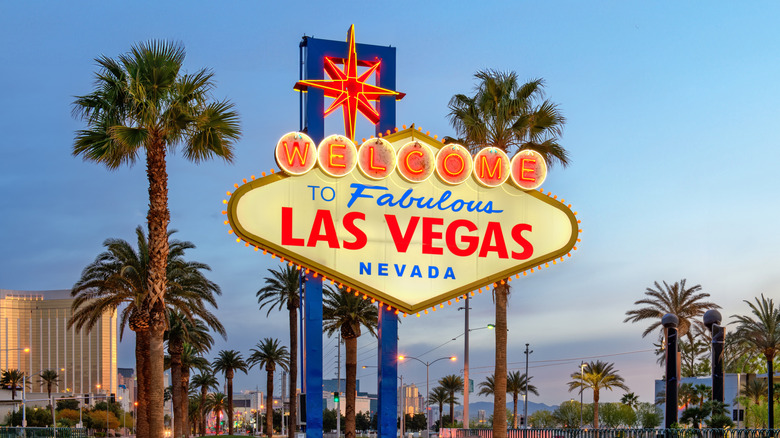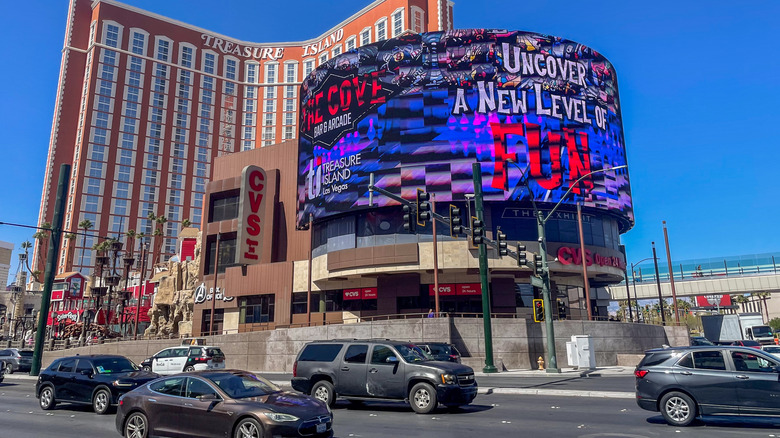Why Las Vegas Has No Lines Dividing Its Roads' Lanes
Las Vegas, Nevada, is distinctive in many ways. Known as the Entertainment Capital of the World, it offers more than just casinos and nightclubs. Visitors can enjoy dazzling light displays, take in the MSG Sphere, and even visit a speakeasy at the Mob Museum. There's so much to see that tourists may not notice this one small but unique feature about the city's streets and freeways: they aren't marked with painted lines.
We're all familiar with the painted white and yellow lines that mark most roadways in the U.S. Just like the red octagon tells us to stop, these lines give drivers the information they need to drive safely. Cars that are driving in different directions are divided by a single or double yellow line. A solid line tells us to stay in our lane, while a dotted line signals that passing is permitted when it's safe to do so.
If you live in or have visited Sin City, you probably know that it gets hot — very hot. While the average high is quite temperate in the winter, in July, you can expect highs nearing 105 degrees! Those high temperatures mean the lines painted on the road just aren't durable enough, so the city uses raised pavement markers instead.
Can't take the heat
Vegas roads don't melt in the sweltering heat because the asphalt has a high oil content. The streets are durable, but those yellow and white lines used in most other American cities do not hold up, quickly becoming discolored and dark due to the oil. Instead, the roads are marked with those raised pavement markers, sometimes called Botts' Dots, to help drivers stay in the appropriate lanes. These markers, some of which are ceramic and some of which are retroreflective, are named after their inventor, Elbert Dysart Botts, and are similar to the road reflectors used in many other parts of the U.S. Unlike painted lines, they often hold up for years.
The raised pavement markers are positioned to reflect a car's headlights, making it easy for drivers to spot them. They also have an additional safety benefit because they make a noise similar to rumble strips when you drive over them. Because they're so noisy, you'll only spot these dots on roads outside of residential areas. They can also be a tripping hazard, so Las Vegas avoids using them to mark crosswalks or other pedestrian and bike paths.
If you're wondering why your city doesn't have these nifty little dots, there may be two reasons. One is cost. Botts' Dots are more durable than paint but cost more to install, though they do require less long-term maintenance. Weather also plays a factor, because they cannot be installed on roads that require plowing due to snow or ice.

